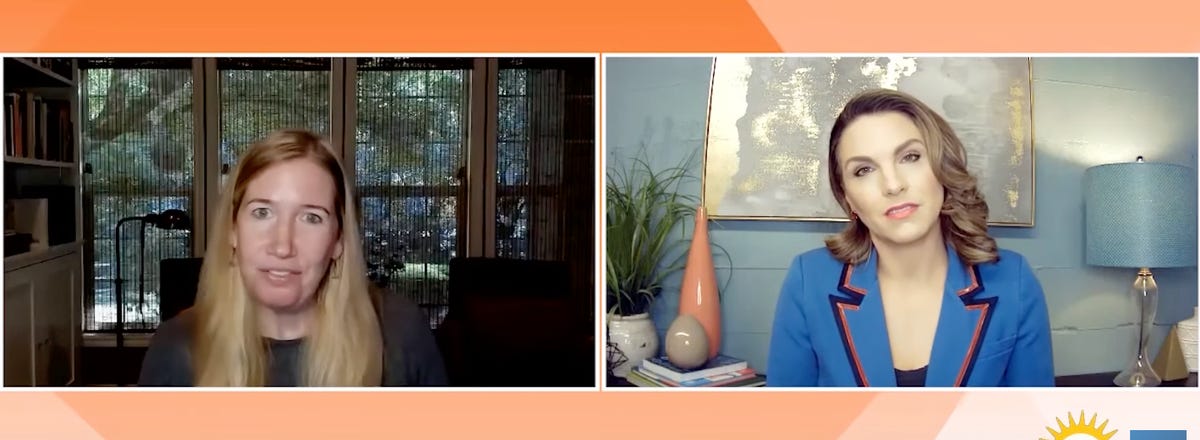A Microsoft scientist went on TV and revealed the craziest truth about working from home | ZDNet

Some focus at home. Some focus at the office.
Screenshot by ZDNet
You’ve already decided.
You’ve had long enough.
Working from home either works for you, or it doesn’t.
You may, though, have very specific, subjective reasons for your decision.
Many believe I suspect that working from home is simply more productive. Personally, I’m sure it is. I always found being in an office a mildly disturbing experience. Unless that is, I really, really liked the people I worked with. (A somewhat rare event for me, I’m afraid.)
Yet I was moved to marveling at humanity’s dexterity with contradiction when I happened upon the TV appearance of a very senior Microsoft scientist.
I’m right. No, I’m right.
Gracing the screens of Seattle’s local station King 5 was Jaime Teevan, Microsoft’s chief scientist for experiences and devices. This is a job I never knew existed and one I surely should have applied for.
She explained how the current state of doubt — are we going back to the office or aren’t we? — is in some ways more uncertain than the sure truth of lockdowns and office closures.
Still, over the last 18 months, the one ironic, almost stupefying thing that Microsoft has learned, said Teevan, is that there is an absolute and even divide over which work location is more productive.
“Probably the biggest thing that comes out of the data is just how different the experience has been for each person,” said Teevan.
Surely, though, there’s some sort of democratic consensus about which location incites the better results?
“You look at the people who are really excited about remote work,” said Teevan. “We see that 58% of those people really value remote work because it allows them to focus.”
Instinctively, I want to believe this partly because this has been my own experience over the last 14 years of remote work.
Teevan, though, was ready with the punchline: “And when you look at the people who are really excited about going back into the office, we see that same number — 58% — who are really excited about going back into the office because it allows them to focus.”
It’s an entirely maddening world, isn’t it? It might make you refuse to run a business and instead spend the rest of your life talking to donkeys — an activity I strongly favor.
It’s all about sustainability. No, not that sort of sustainability.
Because she’s a scientist, Teevan sprinkled the conversation with delicious nuance. In essence, there’s productive, and then there’s productive.
“We’re seeing that people while working remote are able to be very productive,” she said. “Like, we’re getting a lot of stuff done, but not necessarily in a way that’s sustainable.”
Well, yes. If you’re like many companies that have taken liberties by treating their workers as if they’re permanently on call, you might imagine their effort isn’t sustainable.
For Teevan, though, “a lot of the things that sustain us are the ability to take breaks and take care of ourselves, the ability to connect with people and build relationships. And even the ability to brainstorm and innovate and think about new things.”
This, she said, was more the definition of doing good work in the long term.
Ergo, working from home is more about checking things off our to-do list, while going back to the office is more about innovation and collaboration.
Perhaps. But how can that possibly square with the great, crazy dichotomy of the same percentage of people insisting they’re more productive at the office and not?
Look what we found. Empathy.
And then came a sentence that made me wonder about the sort of people who work at tech companies — and, in this case, at Microsoft.
Teevan said: “We have developed a ton of empathy this past year for what it means to be working from home.”
How odd that Microsoft didn’t have that empathy before. After all, 18% of the company’s employees were already working from home before the pandemic.
Did it really take a pandemic for Microsoft to appreciate somehow the issues of those who, for whatever reason, don’t come into the office? Microsoft? An emotionally chilly company? I thought all that had changed.
Teevan insisted that this newfound empathy will mean Microsoft will do more to include remote workers in meetings.
Her example was in-meeting chat. “It’s a great way, actually, for people to be included. Women are more likely to be using in-meeting chat…people who are less likely to take the floor in a meeting will use the side-chat.”
This only makes me wonder whether the side-chat might ultimately become the remote workers’ corner while the in-person people yak away.
These will continue to be turbulent times. Some employees are quitting rather than being forced to return to their fine corporate location. Teevan, on the other hand, says she goes to the office not to have formal meetings but just to chat with people.
Somehow, then, companies may have to (try to) balance what suits every single individual.
And to think that, not so long ago, some halfwit thought open-plan offices were the future.
For all the latest Technology News Click Here
For the latest news and updates, follow us on Google News.
